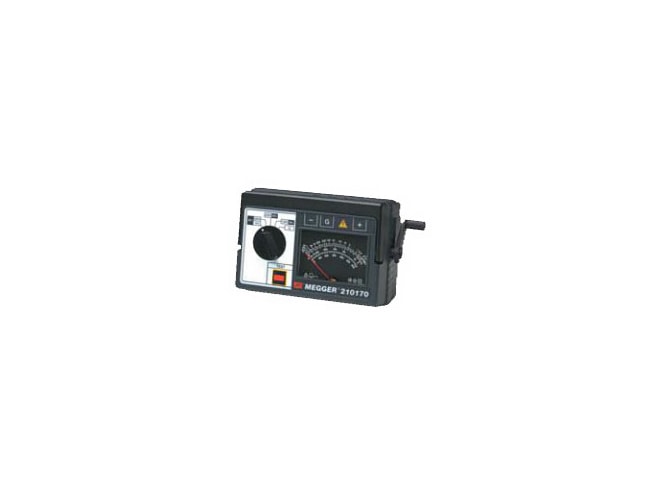
Megger 210170 Insulation Resistance Tester
Analog insulation tester for high-resistance readings up to 20 gigaohms for troubleshooting and preventative maintenance applications.

- 6410-957
- By Megger
Overview
Features
- 20,000MΩ (20GΩ) insulation resistance
- ±3% of scale accuracy
- 100, 250, 500, & 1000V test voltages set by rotary switch
- Hand crank generated to 1KV with ±5% accuracy
- 0 to 5000Ω low resistance continuity test (3VDC)
- ±3% of scale accuracy
- Tests for 0 to 600VAC or the presence of DC voltage
- ±2.5% of scale accuracy
- 14 to 122°F operating temperature range
- Enclosed in an impact-resistant, flame-retardant case
- Protected for 500V line to line Category III installation
- 300V line to ground
What's in the Box
- User guide
- Black, red, and green test lead set
- Alligator clips
- 5 test record cards
- Carrying case
Description
The Megger 210170 insulation resistance tester is ideal for applications where high ohm ranges are necessary. It generates a regulated high DC voltage and uses low-zero-drift, high-accuracy circuits, with high current sensitivity. Power is supplied by a hand cranked, gear train AC generator. Test results are displayed via an analog meter, calibrated in megohms, ohms and AC volts. It features a guard terminal to eliminate surface leakage current from the measurement.
The 210170 measures the insulation resistance of wires, power cables, motors, generators, transformers, switchboards and electrical controls. It offers multiple test voltages for performing spot and step-voltage tests. Typical applications include:
- Acceptance testing at time of installation to check conformance to specifications
- Routine preventive maintenance testing after installation
- Quality assurance testing by the manufacturer
- Diagnostic testing to isolate faulty components for repair
This insulation tester can be used for detecting high- or low-resistance grounds, short circuits in apparatus, cables, wiring, etc. whether caused by moisture, oil, dirt, corrosion, damage to insulation or natural deterioration. It can also be used to determine the presence of moisture, solvents and semiconducting foreign materials in wires, cables and other conductors, and in built-up insulation systems such as those found in motor windings.
Need Help? Call a Temperature engineer at 1-800-884-4967
We're open 8:00 am to 5:00 pm ET






